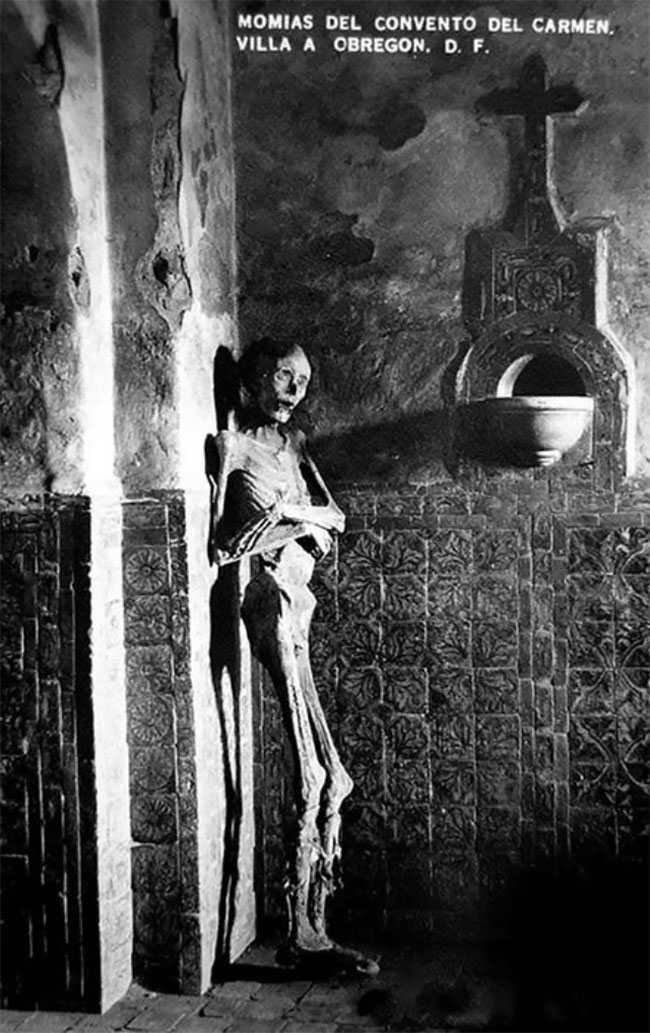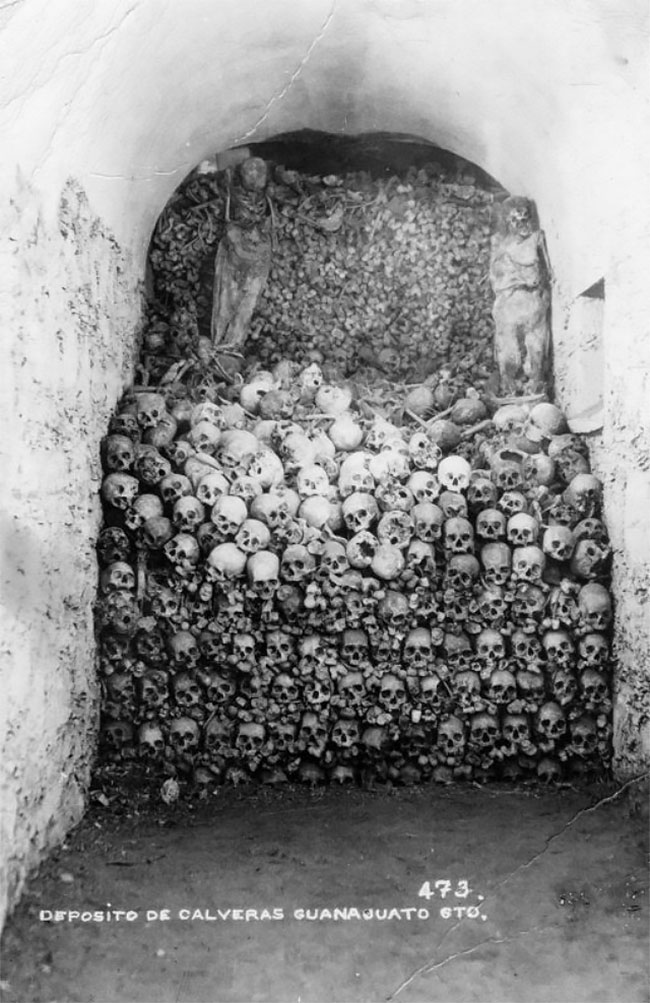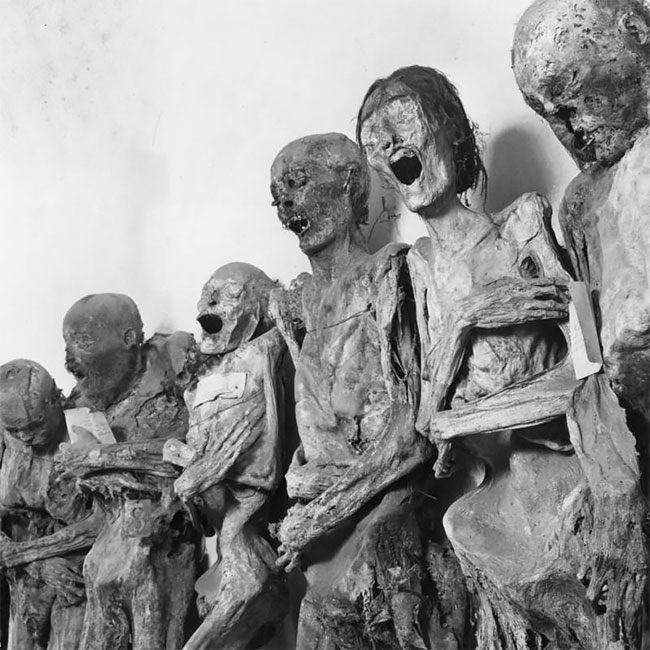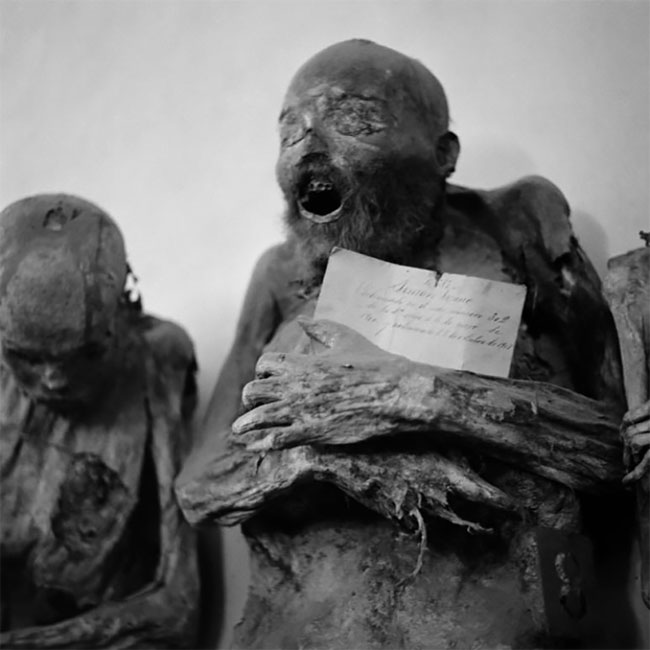Inside the Gruesome Mummies of Guanajuato in the 1950s
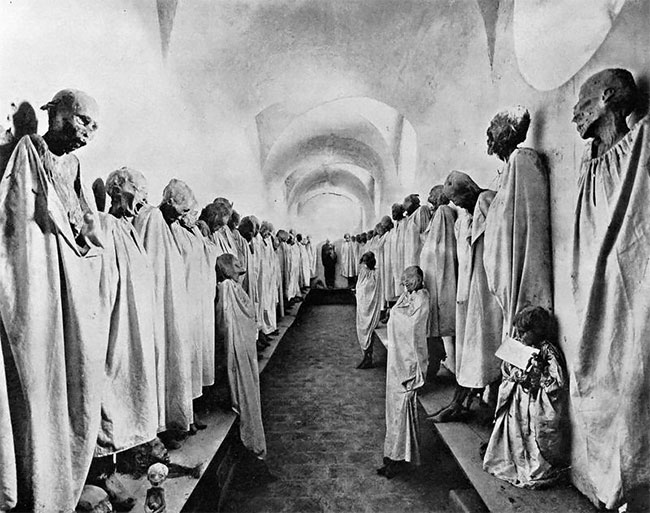
The Mummies of Guanajuato are a number of naturally mummified bodies interred during a cholera outbreak around Guanajuato, Mexico in 1833.
h/t: vintag.es

The human bodies appear to have been disinterred between 1870 and 1958. During that time, a local tax was in place requiring a fee to be paid for “perpetual” burial. Some bodies for which the tax was not paid were disinterred, and some—apparently those in the best condition—were stored in a nearby building. The climate of Guanajuato provides an environment which can lead to a type of natural mummification, although scientific studies later revealed that some bodies had been at least partially embalmed.

By the 1900s the mummies began attracting tourists. Cemetery workers began charging people a few pesos to enter the building where bones and mummies were stored.

This place was subsequently turned into a museum called El Museo de las Momias (“The Museum of the Mummies”) in 1969. As of 2007, 59 mummies were on display, of a collection that totals 111.





